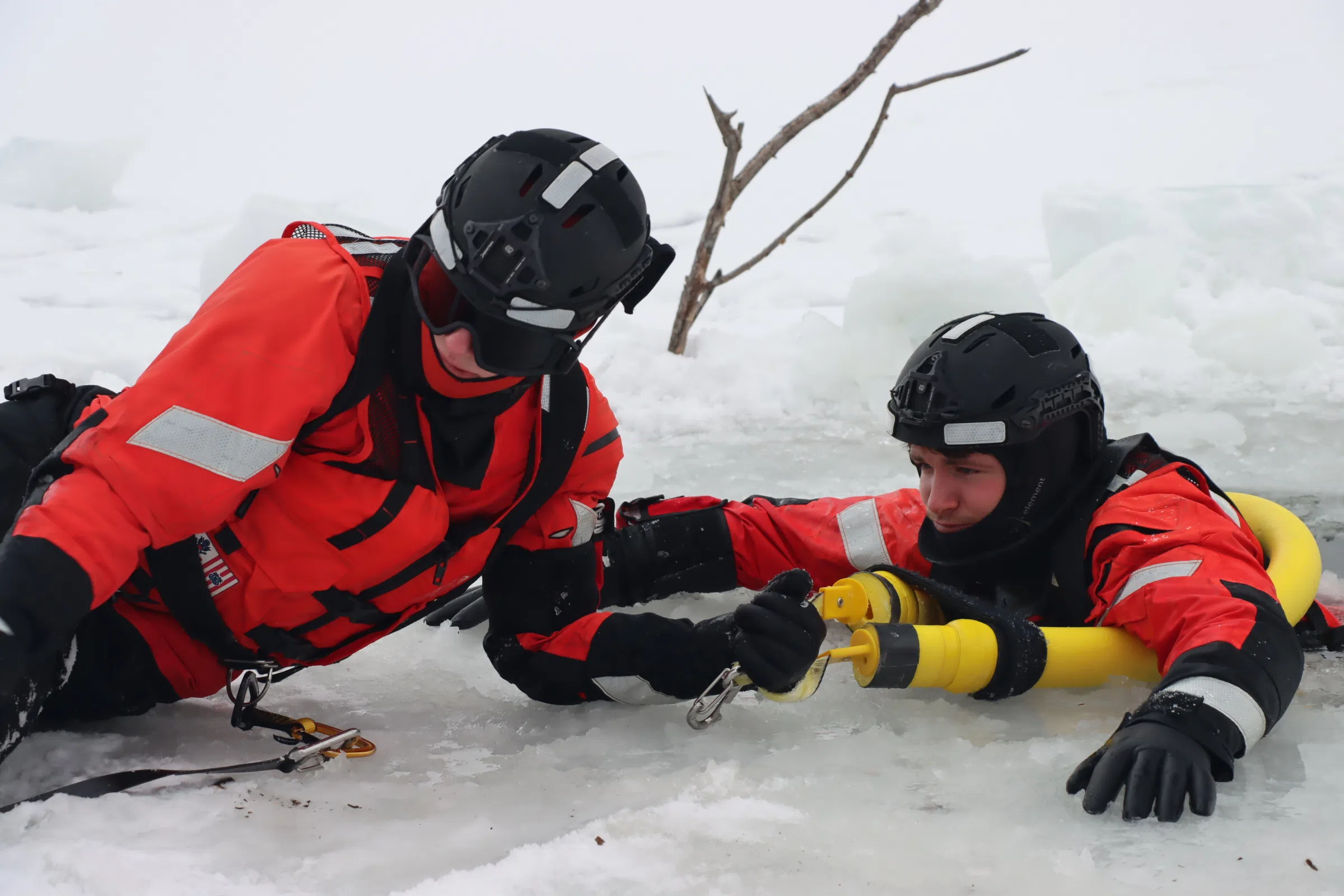
The recent run of warmer temperatures has the coast guard warning snowmobile riders to use caution when near ice. Warm air temperatures will cause frozen waters to melt at alarming rates and may cause some riders to misjudge ice thickness. The Coast Guard shared in an announcement to the Great Lakes region that water temperatures remain dangerously cold and ice thickness can become unpredictable. Especially near infrastructure like bridges, small inlets, outlets, or smaller bodies of water. Stay away from cracks, seams, ridges, slushy areas, and dark-colored ice. Keweenaw County Sheriff Curt Pennala in January shared that ice resuces can become quite the challenge to rescuers.
Realizing that you know, underneath all the ice shelves, there’s open water. It creates air pockets under there, so it is very dangerous. You know, if you’re going out ice fishing, make sure you take a spud with you and check the ice for depth. Make sure you know what the depths are that you should be on that ice, whether you’re on it with your body or, you know, you’re on some type of equipment like a snowmobile or ATV. – Curt Pennala, Sheriff, Keweenaw County Sheirff’s Office
Find more information from the United States Coast Guard below:
Before you head out onto the ice or onto the water, make sure you take the necessary precautions
that could save your life:
• Always wear a Coast Guard-approved life jacket. A life jacket allows a person to float with a minimum of energy expended and allows the person to assume the Heat Escape Lessening Position by bringing the knees close to the chest and holding them in place by wrapping the arms around the shin portions of the legs.
• Dress for the water temperature not the air temperature. Don’t let warm temperatures deceive you. Wear a dry suit in any cold-water environment to increase the chance of surviving a fall into the water.
• Hypothermia is the biggest danger after falling into the water, even if one manages to get out immediately. Every minute counts in a cold water environment. Hypothermia sets in quickly as the human body’s core temperature drops below 95 degrees (35 degrees C). Cold water drains a body’s heat up to 25 times faster than cold air.
• Dress in bright colors, wear reflective clothing, patches, or tape, and wear an exposure suit that is waterproof. The chance of locating a person in distress is increased when the individual wears bright and reflective clothing.
• Never go out on the water alone; always use the buddy system. File a float plan to let a friend or relative know where you’re going and how long you expect to be gone.
• Carry a registered personal locator beacon in addition to a marine radio to alert the Coast Guard and local safety agencies of potential distress. Consider a waterproof hand-held model that can be worn. Bring ice awls or screw drivers in case you need to self-rescue







Comments